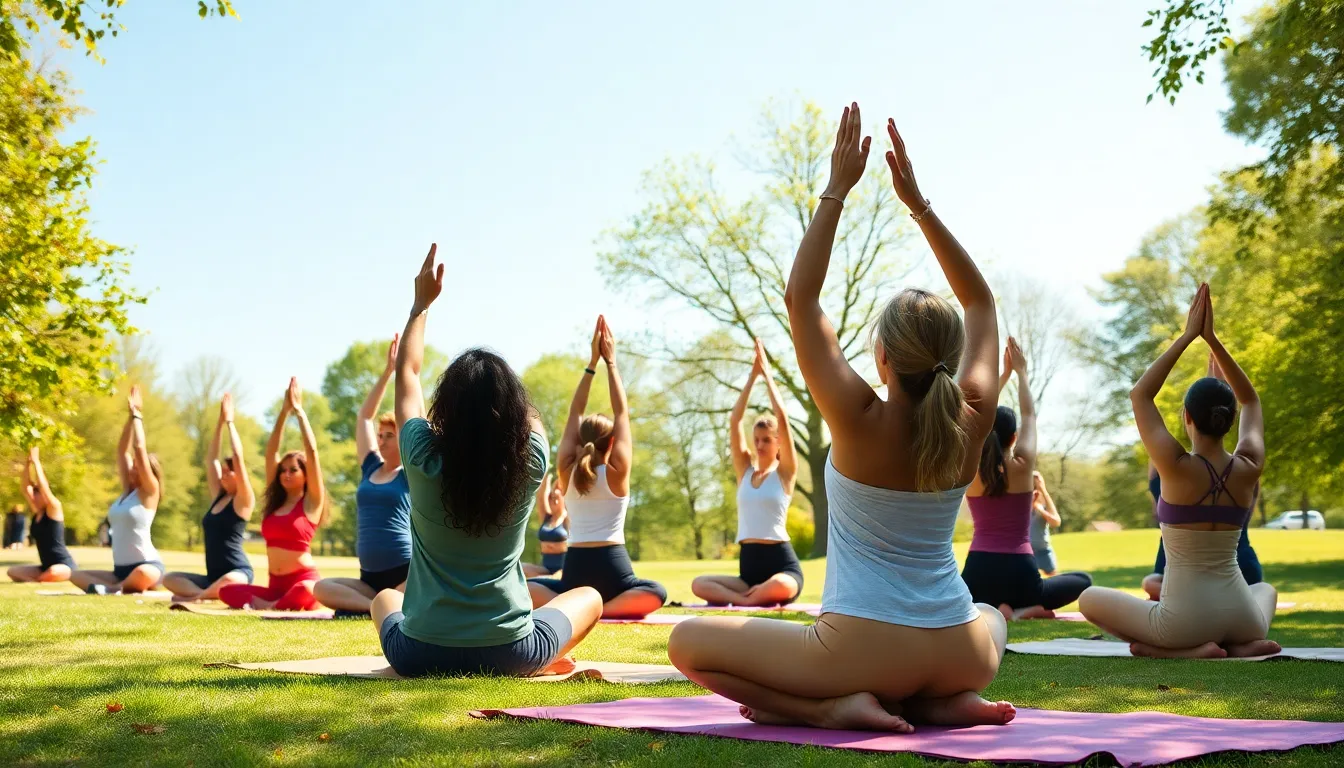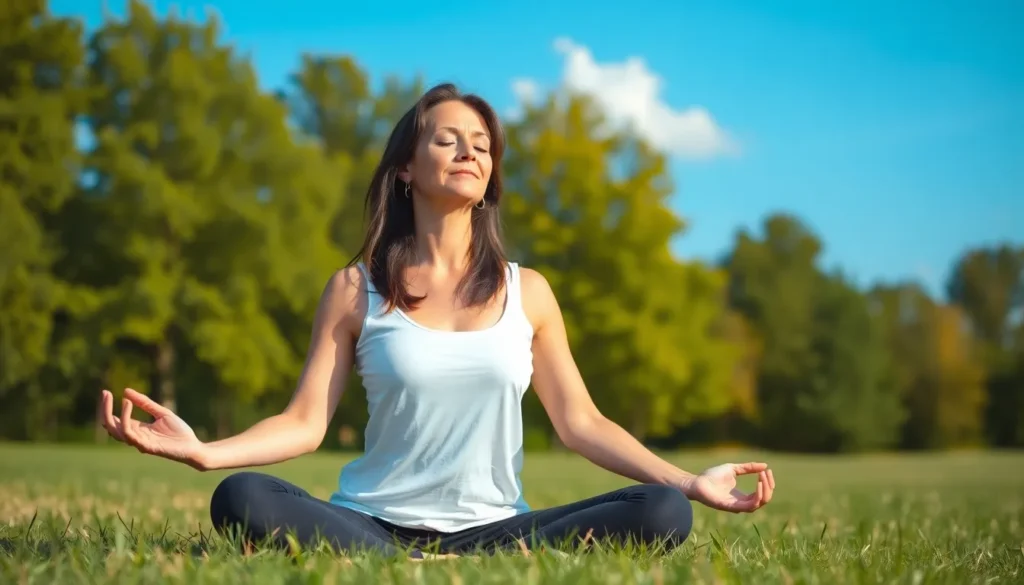In a world where multitasking has become the norm and stress is practically a badge of honor, the mindfulness movement is like a refreshing cup of herbal tea amidst a sea of energy drinks. It invites individuals to slow down and savor the present moment, proving that sometimes the best way to tackle life’s chaos is to take a deep breath and just be.
Imagine trading frantic thoughts for a peaceful mind, all while boosting your focus and creativity. Mindfulness isn’t just a trend; it’s a lifestyle shift that encourages people to connect with themselves and their surroundings. Whether it’s through meditation, yoga, or simply enjoying a quiet moment, this movement offers a delightful escape from the daily grind. So, why not join the wave of mindful enthusiasts and discover how a little awareness can transform your life?
Table of Contents
ToggleWhat Is the Mindfulness Movement?
The mindfulness movement serves as a response to modern life’s stress and chaos, promoting awareness and presence in everyday activities. This practice fosters connection to oneself and the surrounding environment, offering numerous benefits.
Definition and Origins
Mindfulness refers to the state of being fully present and engaged in the moment without judgment. Its origins trace back to ancient contemplative practices, particularly within Buddhism. In the 1970s, Jon Kabat-Zinn introduced mindfulness to the West through his Mindfulness-Based Stress Reduction program. This program emphasizes awareness and acceptance, laying the groundwork for the movement’s growth in modern society. Various therapeutic approaches now incorporate mindfulness concepts, effectively merging traditional and contemporary practices.
Key Principles
The key principles of the mindfulness movement include awareness, non-judgment, and acceptance. Awareness involves noticing thoughts, feelings, and sensations without getting overwhelmed. Non-judgment encourages individuals to observe experiences without labeling them as good or bad. Acceptance allows people to embrace their current experiences rather than resist them. Together, these principles encourage a deeper understanding of oneself and foster emotional resilience. Engaging with these core tenets supports mental well-being and enhances overall life satisfaction.
Benefits of the Mindfulness Movement

The mindfulness movement offers numerous advantages that positively impact both mental and physical health. Embracing mindfulness practices promotes a more balanced and fulfilling life.
Mental Health Improvements
Mindfulness significantly enhances mental health by reducing symptoms of anxiety and depression. Research shows that consistent mindfulness practice boosts emotional regulation. Participants in mindfulness programs report lower stress levels, improved concentration, and increased resilience against negative thoughts. Engaging in techniques like meditation and mindful breathing cultivates a greater sense of well-being. Practitioners also experience enhanced self-awareness, which fosters healthier relationships with themselves and others.
Physical Health Benefits
Physical health also benefits from regular mindfulness practice. Studies indicate that mindfulness can lower blood pressure and improve immunity. Participants in mindfulness-based programs often report better sleep quality and reduced chronic pain symptoms. Engaging in mindful exercises, such as yoga, strengthens the body while calming the mind. The combination of mindfulness and movement contributes to overall fitness and vitality. These effects create a holistic approach to health that nurtures both body and mind.
Practices Within the Mindfulness Movement
Mindfulness practices promote a deeper connection to the present moment. Many individuals explore various techniques to enhance this connection.
Meditation Techniques
Meditation techniques form the foundation of mindfulness. Guided meditation helps practitioners focus on specific thoughts or images, allowing them to cultivate a sense of peace. Transcendental meditation involves repeating a mantra, which aids in achieving mental clarity. Loving-kindness meditation emphasizes compassion, encouraging individuals to extend kindness toward themselves and others. Body scan meditation enables individuals to observe bodily sensations without judgment, promoting a greater awareness of physical presence.
Mindful Breathing and Yoga
Mindful breathing serves as a powerful tool to ground oneself in the present. It encourages individuals to focus on their breath, creating a calming effect and enhancing emotional regulation. Simple techniques, such as inhaling for five counts and exhaling for five counts, facilitate relaxation. Combining mindful breathing with yoga enhances the physical experience, promoting flexibility and strength while maintaining awareness. Various yoga styles, including Hatha and Vinyasa, incorporate mindful movements that align with breath, creating a holistic practice that nourishes the body and mind.
How to Incorporate Mindfulness Into Daily Life
Incorporating mindfulness into daily life enhances well-being and promotes a sense of calm. Practicing mindfulness in simple ways can create meaningful changes.
Simple Mindfulness Exercises
Breathing exercises serve as an effective starting point. Engage in deep, conscious breaths for a few minutes, focusing on the inhale and exhale. Body scans can also raise awareness. Lie down comfortably and mentally observe each body part from head to toe, releasing tension with every exhale. Walking meditations offer another unique approach. While walking, notice the sensations of each step and the environment around. Journal prompts can further aid mindfulness. Write down thoughts and feelings without judgment to gain clarity. These exercises foster a connection with the present moment and promote relaxation.
Creating a Mindful Environment
A mindful environment supports a tranquil lifestyle. Clear clutter from spaces to promote calmness. Use natural light wherever possible, as it enhances mood and energy. Incorporate plants to bring a sense of nature indoors; they improve air quality and create a peaceful atmosphere. Choose calming colors for decor, as soft hues can reduce stress. Set aside areas for mindfulness practices, such as meditation or yoga, where distractions are minimal. Sound elements like soothing music or nature sounds can nurture a serene ambiance. These elements combined create a space conducive to mindfulness, encouraging personal growth and emotional resilience.
Embracing the mindfulness movement can transform daily life into a more enriching experience. By fostering awareness and acceptance, individuals can cultivate a sense of peace amidst the chaos. Incorporating mindfulness practices like meditation and yoga not only enhances mental clarity but also nurtures physical health.
Creating a mindful environment encourages personal growth while promoting emotional resilience. As people navigate the complexities of modern life, adopting these practices can lead to a fulfilling existence. The journey toward mindfulness is personal and unique, offering a pathway to connect more deeply with oneself and the surrounding world.





